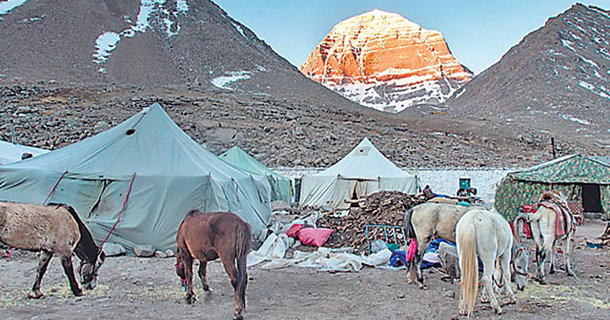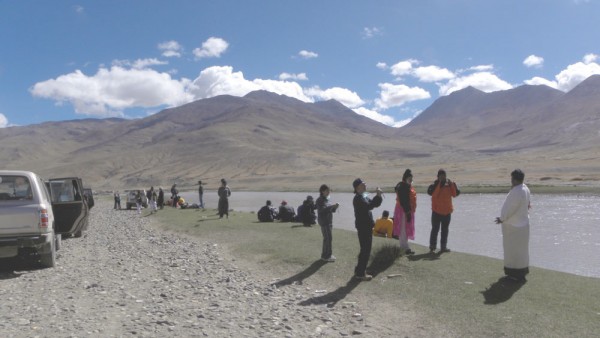25,000 pilgrims are waiting to cross the border from Nepal into Tibet to embark on the annual pilgrimage, the Kailash Mansarovar yatra. Tour operators in the area have said that China has closed the border points to ensure the safety of the pilgrims in view of landslides which followed the recent devastating earthquakes in Nepal.
These 25,000 foreigners, including Indian, Russian, Malaysian and European tourists, have booked their tours for Kailash Mansarovar through 38 tour and travel companies based in Nepal. China has closed border points, including Tatopani, Rasuwa and Hilsa, citing landslides as the reason.
Nearly 40,000 pilgrims and tourists, approximately 80% of them from India, annually take part in the pilgrimage to visit Kailash Mansarovar, a popular Hindu and Buddhist shrine, and the nearby Manasarovar Lake, usually during May-July. This pilgrimage is considered to be important, especially for Indians. Kailash peak is regarded as an abode of Lord Shiva and his wife Parvati, and it has been the centre of devotion from ancient times for the Devas, Danavas, Yakshas, Kinners, Vidyadharas, Gandharvas, Apsaras, yogis, Munis, Siddhas, Tapes and humans. It is sacred to Hindus, Jains, Buddhists and the followers of Tibet’s pre-Buddhist Bon religion.
The yatra would boost tourism in Nepal, which was badly affected after the quakes. Nepal’s tourism and civil aviation ministry have therefore asked the foreign ministry to raise the issue with the Chinese authorities. “There has been no official statement from China about the closure. But we are requesting our foreign ministry to take up the matter with Chinese authorities to ensure the border points are open for pilgrims,” said a tourism ministry spokesperson.
As an alternative, travel operators have asked the government to allow tourists to visit Kailash Mansarovar by helicopter or on foot from Nepalgunj-Surkhet in western Nepal and close to the Hindu pilgrimage site. Another option would be to open the Hilsa point in Humla district.
Tulasi Gautam, Director General of the Tourism Department, said that initiatives were being taken at ministerial level. “The road to Tatopani has already been opened.We are trying to bring these 25,000 tourists to Nepal by any means,” he said.
No tourist has so far cancelled their booking, according to Prakash Shrestha, Chairman of Kailash Tour Association. Tour operators there say that the tourists are ready to come as soon as they receive a time-table.
While this story unfolds in Nepal, pilgrims will be able to travel to the holy site from India using the new option of theNathu La pass, located on Tibet-India border in Sikkim, from June this year. Indian Prime Minister Narendra Modi said during his visit to Shanghai last month, “The Nathu La route for Indian pilgrims to visit Kailash Mansarovar will become operational in June. I want to thank China for that.” Chinese President Xi Jinping had announced this development in his visit to India in September last year as a means of improving economic relations between the two countries.This expected new route will take pilgrims from Nathu-La to Shigatse, Tibet’s second biggest city after the capital Lhasa, by road. From there, pilgrims can comfortably travel to Mansarovar and Kailash using the well-laid highway.
Though the new route is longer, the journey will be both safer and more comfortable than the existing ones through Uttarakhand state in India and Nepal. A large majority of the pilgrims will travel via the Lipulekh Pass in Uttarakhand, a 22-day journey connecting the Kumaon region of Uttarakhand with the old trading town of Taklakot in Tibet. This route was badly damaged during recent flooding.
The easiest and shortest route for travelling to the Kailash-Manasarovar sites remains Demchok in the Ladakh region of Jammu and Kashmir. This route was used by Indian pilgrims when Tibet was free until 1959 without the need to apply for a visa. People in Ladakh have been demanding the reopening of this route but without success, apparently due to China’s refusal.






 Print
Print Email
Email